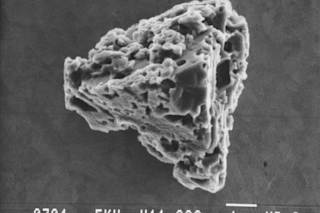In space, there are clouds that contain gas and dust ejected from stars. Our solar system was formed 4.6 billion years ago from such a molecular cloud. Most of these dust grains were destroyed during solar system formation.
The dark areas in this image of the Carina Nebula are molecular clouds. NASA, ESA, N. Smith (U. California, Berkeley) et al., and The Hubble Heritage Team (STScI/AURA)
However, a very small amount of the grains survived and remained intact in primitive meteorites. They are called presolar grains because they predate the solar system. I am a scientist who studies the early solar system and beyond, focusing mainly on presolar grains.
Presolar grains like this one existed billions of years ago in molecular clouds before making it to Earth in meteorites. Provided by Sachiko Amari
The picture is an image of such a grain taken by a scanning electron microscope. This grain ...














